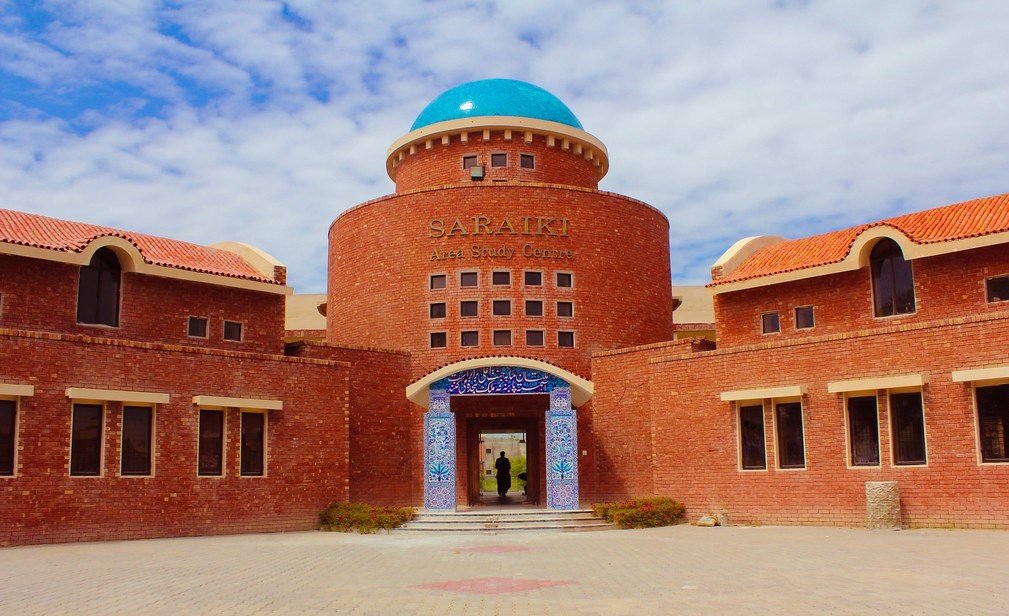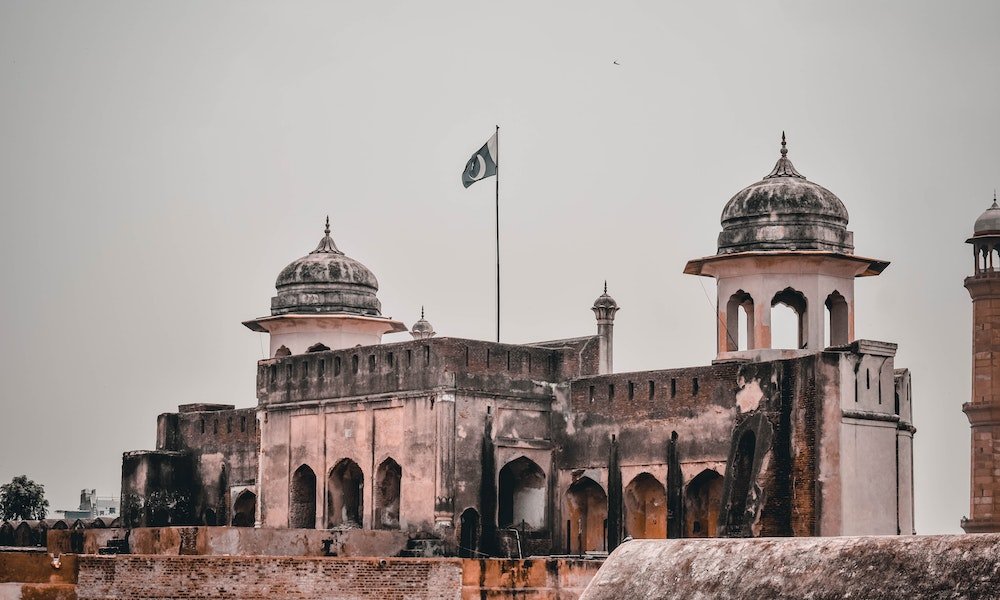Multan’s Majestic Architecture, Multan, located in the heart of Pakistan’s Punjab province, is renowned for its rich cultural heritage, and its architecture stands as a testament to its illustrious past. The city’s architectural marvels reflect a captivating fusion of Mughal and Sufi influences, resulting in a distinctive and awe-inspiring blend of styles.
With a history spanning over millennia, Multan has witnessed the rise and fall of numerous empires. It served as a significant center of trade, culture, and spirituality along ancient trade routes, attracting diverse influences from various civilizations. These influences shaped Multan’s identity, making it a melting pot of different cultures.
Read More: Unveiling Multan’s Hidden Gems: Must-Visit 14 Best Places Off the Beaten Path
Table of Contents
The Mughal Influence on Multan’s Architecture
Multan’s Majestic Architecture, The Mughal era marked a golden period for Multan, during which the city experienced unprecedented growth and prosperity. Emperors like Akbar, Jahangir, and Shah Jahan had a profound impact on the architectural landscape of Multan.

Notable Mughal Architectural Contributions:
- Multan Fort : Constructed during the reign of Emperor Akbar, the Multan Fort stands as an architectural masterpiece. It features robust defensive walls, intricate tile work, and magnificent gateways, showcasing the Mughal architectural finesse.
- Shah Rukn-e-Alam’s Tomb : This exquisite mausoleum, dedicated to the revered Sufi saint Shah Rukn-e-Alam, showcases the fusion of Mughal and Sufi architectural elements. Its soaring dome, elegant minarets, and intricately carved marble walls are reminiscent of the Mughal grandeur.
- Multan’s Walled City : Enclosed within its historic walls, Multan’s old city is a treasure trove of Mughal architectural gems. The narrow, winding streets are adorned with stunning havelis (traditional mansions) and mosques, displaying the finesse of Mughal craftsmanship.
The Sufi Influence on Multan’s Architecture
Multan’s Majestic Architecture, Multan has been a center of Sufism for centuries, and the spiritual traditions of Sufi saints have left an indelible mark on its architecture. Sufism, with its emphasis on devotion and mysticism, inspired the creation of magnificent shrines and sacred spaces throughout the city.
Role of Sufism in Multan:
Multan’s Majestic Architecture, Sufism has played a pivotal role in shaping Multan’s culture and architectural heritage. The city’s connection with revered Sufi saints, such as Shah Shams Tabriz and Shah Rukn-e-Alam, has fostered a unique blend of spirituality and artistic expression.
Sufi Shrines and Their Architectural Significance:
- Shrine of Bahauddin Zakariya: Dedicated to the Sufi saint Bahauddin Zakariya, this shrine exemplifies the fusion of Mughal and Sufi architectural styles. The shrine’s intricate tile work, calligraphy, and geometric patterns showcase the artistic brilliance inspired by Sufi traditions.
- Shrine of Shah Shams Tabriz : This sacred shrine, devoted to the Sufi saint Shah Shams Tabriz, stands as a symbol of spiritual harmony and architectural splendor. Its unique blend of Mughal and Sufi architectural elements captivates visitors with its delicate artwork and mesmerizing domes.
Fusion of Mughal and Sufi Architectural Styles
Multan’s Majestic Architecture, The fusion of Mughal and Sufi architectural styles in Multan is a testament to the harmonious coexistence of diverse cultural influences. The architects of the time skillfully integrated design elements from both traditions, resulting in an architectural aesthetic that is distinctively Multani.

Blending of Design Elements:
Multan’s Majestic Architecture, The fusion architecture of Multan seamlessly incorporates features such as grand domes, minarets, intricate tile work, delicate calligraphy, and geometric patterns. These elements fuse Mughal opulence with the spiritual symbolism and simplicity associated with Sufism.
Exquisite Examples of Fusion Architecture:
- Jama Masjid : This magnificent mosque combines the grandeur of Mughal architecture with the spiritual essence of Sufi traditions. Its vast prayer hall, adorned with intricate frescoes and ornate mihrabs, showcases the harmonious integration of diverse influences.
- Wali Muhammad Mosque : Located in the old city, this mosque exemplifies the fusion of Mughal and Sufi architectural elements. Its elegant design, intricate floral motifs, and delicate stonework create a serene ambiance that reflects the city’s unique architectural heritage.
Preservation and Restoration Efforts
Multan’s Majestic Architecture, Preserving Multan’s architectural heritage presents numerous challenges. The passage of time, natural disasters, urbanization, and inadequate maintenance have threatened the structural integrity of these priceless landmarks. However, efforts are underway to conserve and restore these architectural marvels.
Challenges in Preserving Multan’s Architectural Heritage:
- Structural Degradation : Many of Multan’s historic buildings suffer from structural decay due to the ravages of time and neglect. Restoration efforts require skilled craftsmanship and considerable financial resources.
- Urban Development Pressures : The rapid pace of urbanization poses a significant threat to Multan’s architectural heritage. The encroachment of modern buildings and infrastructure projects often disregard the preservation of historic structures.
Conservation Initiatives:
Multan’s Majestic Architecture, To safeguard Multan’s architectural heritage, various governmental and non-governmental organizations are working tirelessly to restore and conserve these iconic structures. These initiatives include:
- Documentation and Research : Detailed documentation and research help in understanding the historical significance of each architectural gem. This knowledge forms the basis for restoration efforts.
- Structural Rehabilitation : Multan’s Majestic Architecture, Skilled restoration experts undertake the repair and conservation of deteriorating structures, ensuring their long-term preservation.
Impact on Tourism and Local Economy
Multan’s majestic architecture has become a significant draw for tourists, both domestic and international. The architectural wonders of the city not only contribute to its cultural identity but also have a positive impact on the local economy.

Tourist Attractions in Multan:
- Multan Fort and Museum : The Multan Fort, with its historical significance and breathtaking architecture, attracts tourists interested in the city’s rich past. The accompanying museum showcases artifacts that offer insights into Multan’s cultural heritage.
- Shrine of Shah Rukn-e-Alam : Considered one of the most iconic architectural landmarks in Multan, this Sufi shrine draws devotees and tourists alike. Its awe-inspiring beauty and spiritual ambiance create a profound impact on visitors.
Economic Benefits of Architectural Tourism:
Multan’s Majestic Architecture, Architectural tourism in Multan has contributed significantly to the local economy. The influx of visitors generates income and employment opportunities for local businesses, including hotels, restaurants, souvenir shops, and tour operators. It also promotes cultural exchange and appreciation.
Multan’s Majestic Architecture, Conclusion
Multan’s majestic architecture is a testament to the fusion of Mughal and Sufi influences, resulting in a unique and captivating blend of styles. The city’s historic landmarks, such as the Multan Fort, shrines of Shah Rukn-e-Alam and Bahauddin Zakariya, and the old city’s architectural wonders, continue to inspire awe and admiration. Efforts to preserve and restore these architectural gems are vital for safeguarding Multan’s cultural heritage and ensuring their availability for future generations to appreciate.
Read More: “Multan: The City of Saints and Shrines”: 14 Important Points
FAQs
- What is the most famous Mughal architectural structure in Multan?
The Multan Fort is considered the most famous Mughal architectural structure in Multan. Its robust defensive walls, intricate tile work, and magnificent gateways showcase the finesse of Mughal craftsmanship.
- Which Sufi shrine in Multan is considered the epitome of architectural brilliance?
The shrine of Shah Rukn-e-Alam is considered the epitome of architectural brilliance in Multan. Its soaring dome, elegant minarets, and intricately carved marble walls exemplify the fusion of Mughal and Sufi architectural elements.
- How can tourists contribute to the preservation of Multan’s architectural heritage?
Tourists can contribute to the preservation of Multan’s architectural heritage by respecting the historical sites, following preservation guidelines, and supporting local conservation initiatives through donations or volunteering.
- Are there any guided tours available for exploring Multan’s architectural wonders?
Yes, there are guided tours available for exploring Multan’s architectural wonders. Local tour operators offer guided tours that provide insights into the history, architecture, and cultural significance of the city’s iconic landmarks.
- Can one experience both Mughal and Sufi influences in Multan’s cuisine?
Yes, Multan’s cuisine reflects the city’s diverse influences. Traditional Multani cuisine incorporates elements from both Mughal and Sufi culinary traditions, resulting in a unique blend of flavors and delicacies that tantalize the taste buds.






















